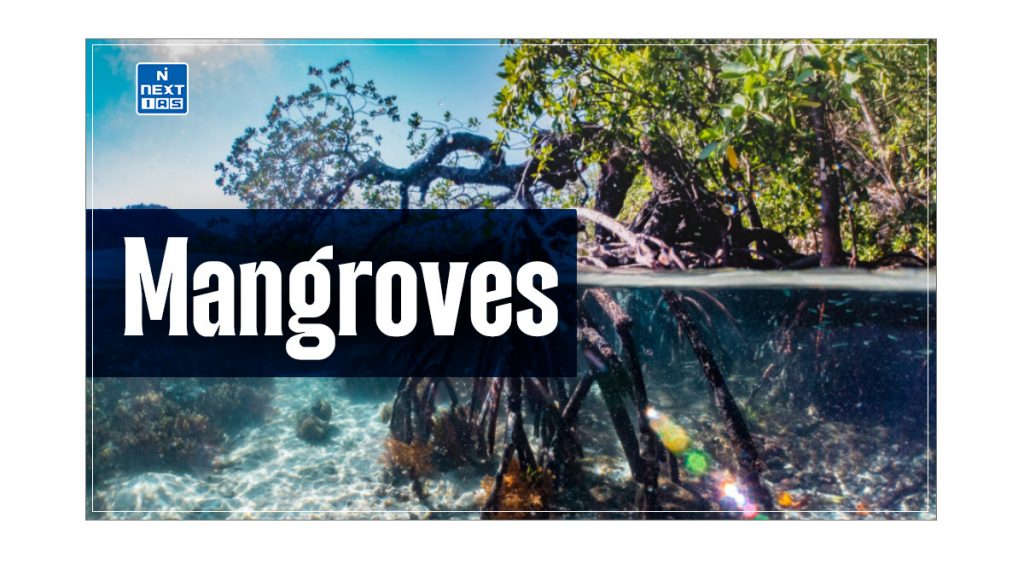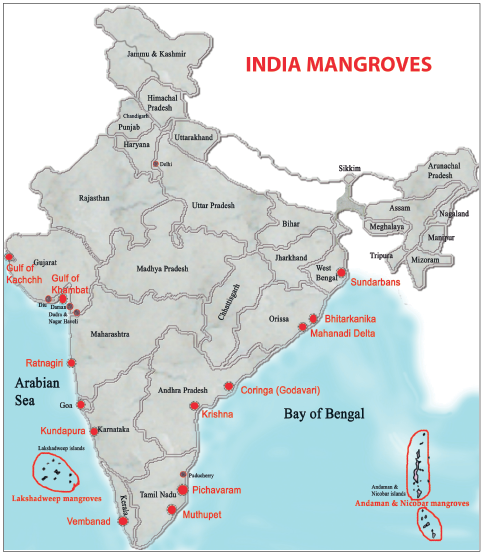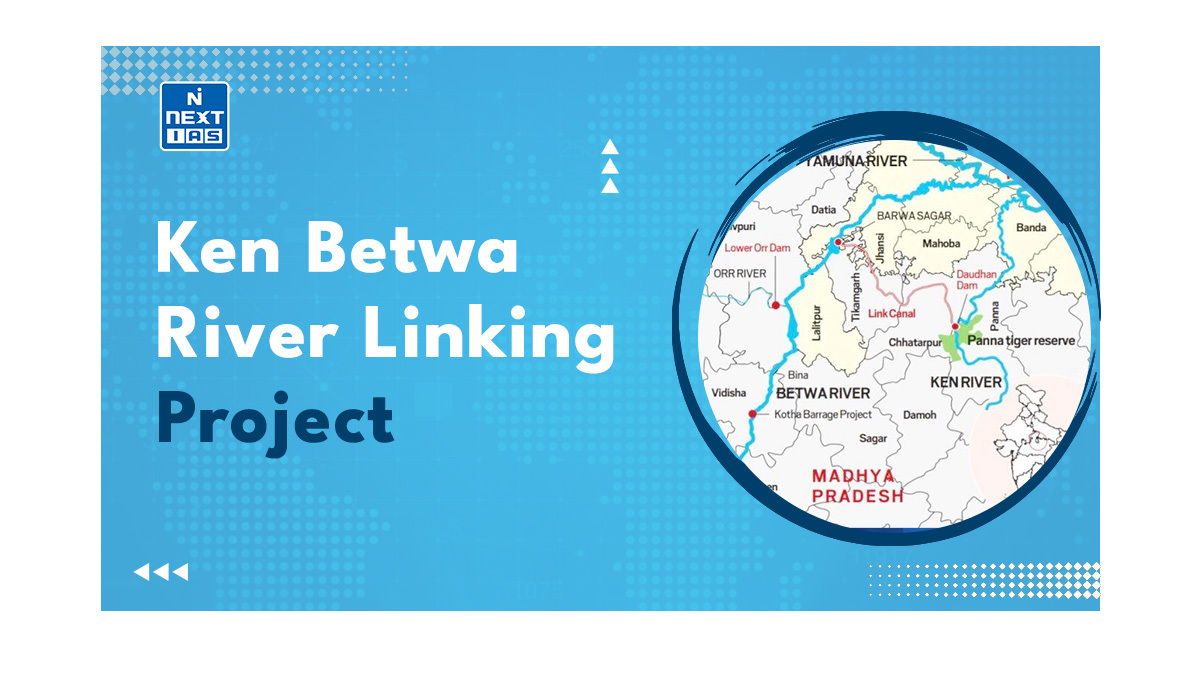
Mangroves are unique and highly productive ecosystems located at the interface of land and sea. They play a crucial role in coastal protection, biodiversity conservation, and climate regulation. This article aims to study in detail the Mangrove Ecosystem, including their features, distribution in India and the world, environmental significance, threats faced, and other aspects.
What are Mangroves?
Mangrove is a type of tree species that grow in intertidal salty environments near the mouths of the delta of rivers along the coasts because they can tolerate frequent flooding and are able to obtain fresh water from rivers and also the nutrients required from salt water.
Features of Mangroves
- They are salt-tolerant plant species with roots dangling down into the water.
- Since they grow in very high salinity waters, they are adapted to the condition and are salt tolerant.
- They can secrete salt from their leaves to balance the salt intake.
- They have developed roots bearing pneumatophore (or aerial roots).
- These forests are also become quite resistant to high temperatures.
- They exhibit a viviparous mode of reproduction.
Distribution of Mangroves in World
They are, generally, found in warmer regions between the 32 degrees north and 38 degrees south latitudes.
Distribution of Mangroves in India
- In India, they are found all along the Indian coastline in sheltered estuaries, tidal creeks, backwaters, and salt marshes.
- Some of the largest mangrove forests in the world are found in the alluvial deltas of Ganga, Godavari, Krishna, Cauvery and in the islands of Andaman and Nicobar.

State-wise Distribution of Mangroves in India
| STATE/UNION TERRITORIES | MANGROVE AREAS |
|---|---|
| West Bengal | Sunderbans |
| Orissa | Bhitarkanika, Mahanadi, Subernarekha, Devi, Chilka, Dhamra, Mangrove Genetic Resources Centre |
| Andhra Pradesh | Coringa, East Godavari, Krishna |
| Tamil Nadu | Pichavaram, Muthupet, Ramnad, Pulicat, Kazhuveli |
| Andaman and Nicobar | North Andamans, Nicobar |
| Kerala | Vembanad, Kannur (Northern Kerala) |
| Karnataka | Coondapur, Dakshin Kannada/Honnavar, Karwar, Manglore Forest Division |
| Goa | Goa |
| Maharashtra | Achra-Ratnagiri, Devgarh-Vijay Durg, Veldur, Kundalika-Revdanda, Mumbra-Diva, Vikroli, Shreevardhan, Vaitarna, Vasai-Manori, Malvan |
| Gujarat | Gulf of Kutchh, Gulf of Khambhat, Dumas-Ubhrat |
Significance of Mangroves
- They are a very productive ecosystem and highly rich in biodiversity.
- They provide shelter for a wide variety of marine species and serve as important nursery areas for young marine animals.
- They are home to a wide variety of fish, reptiles such as sea turtles, land turtles, alligators, crocodiles, caimans, snakes, and lizards and invertebrates such as shrimp, crabs, oysters, tunicates, sponges, snails, and insects.
- Their dense root systems trap and hold sediments flowing down rivers and off the land.
- It stabilises the coastline and prevents erosion from waves and storms.
- It protects the coastal system from cyclones, storm surges etc.
- As they regularly experience tidal waves, they have grown resistant to them.
Threats to Mangroves
- They are under threat from both natural as well as anthropogenic factors.
- In India, more than 50 per cent of Mangrove Forests have been lost during the last 40 years.
- Some of the most prominent threats they face can be seen as follows:
Natural Threats
Natural calamities like tsunamis and cyclones have been causing a lot of damage.
Anthropogenic Threats
- Clearing of these forests for agricultural purposes, human settlements and infrastructure (such as harbours), and industrial areas.
- These trees are in demand for wood and fodder.
- The overharvesting of the trees has led to a decline in the forests.
- Due to the construction of dams, the salinity of their habitat area has increased to a very high level which the trees cannot adapt to.
- Blocking of the river water has dried out the area.
- Pollution from agricultural fields and industries including fertilizers, pesticides, and other chemicals carried by river systems can kill the animals living in these forests.
- Oil pollution can also suffocate the trees.
- These forests also need stable sea level to survive but global warming and climate change has led to change in the sea level which disturbs the delicate balance and thus threatens the ecosystem.
Way Forward
To protect mangroves, strengthen conservation laws, promote afforestation, and enforce strict regulations against deforestation. Enhance community participation, adopt eco-friendly tourism, and restore degraded areas. Invest in scientific research, climate resilience strategies, and sustainable livelihood alternatives. International cooperation and policy integration are essential for long-term mangrove ecosystem sustainability.
Conclusion
Mangroves are indispensable ecosystems that provide numerous ecological, economic, and social benefits. However, they are under significant threat from human activities and climate change. Understanding their importance and implementing effective conservation strategies are crucial for their protection and sustainable use.
GS - 3




